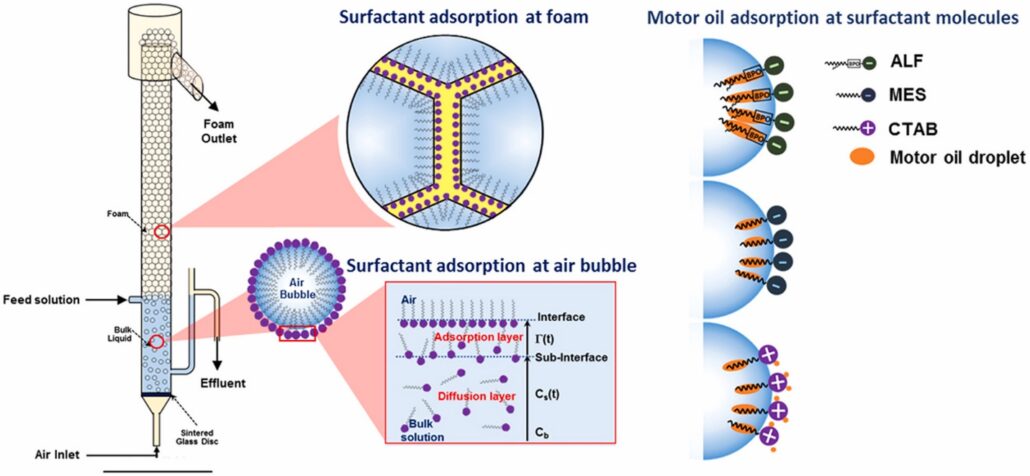March, 2021
Kessara Seneesrisakul, Paweena Kanokkarn, Ampira Charoensaeng, and Sumaeth Chavadej
Abstract:
The influence of the chemical structure of three surfactants, anionic extended surfactant Alfoterra® C145–8PO (ALF), anionic methyl ester sulfonate (MES), and cationic cetyltrimethyl ammonium bromide (CTAB), on the adsorption and foam characteristics relating to effectiveness at reduction of motor oil in a continuous froth flotation system. All surfactants were chosen based on having the similar number of carbon atoms in alkyl chain. So the effects of the different head group and the existence of a polypropylene oxide in the ALF’s structure on the surface activity and motor oil removal could be elaborated. The results demonstrated that CTAB, having strongest positively charged head group with the shortest tail length, provided the highest diffusivity, foamability, and foam stability, leading to the highest enrichment ratios of motor oil and surfactant. Conversely, ALF, having the largest molecular size and the longest tail length, gave the lowest diffusivity and foam properties. Hence, it exhibited the highest motor oil removal and surfactant recovery with the lowest enrichment ratios of both motor oil and ALF. The added packing media with 50% packing volume augmented the residence time of the rising air bubbles, enhancing the motor oil removal by about 16%, 15%, and 24% for the ALF, MES, and CTAB, respectively.


